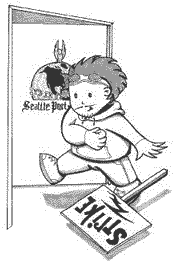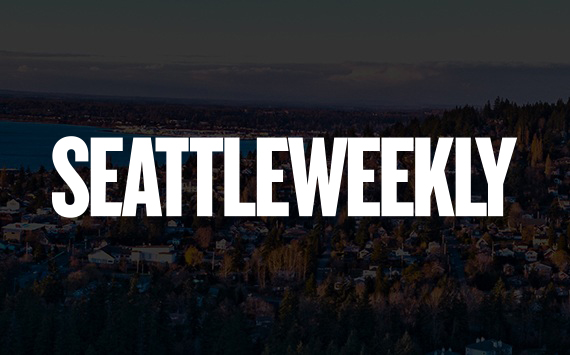SIX WEEKS INTO the newspaper strike, the Seattle Post-Intelligencer finds itself with something it hasn’t had in years—a competitive advantage.
Some 130 P-I newsroom employees returned to work on January 2 after voting 88-29 to accept a new contract. A few days after the P-I vote, striking workers at The Seattle Times rejected their proposed contract by a similar margin.
The two votes matched the recommendations given by officials of the Pacific Northwest Newspaper Guild: The union opposed the Times contract because the newspaper wants to give rehiring preference to temporary employees and Guild members who crossed picket lines, while slashing the company’s total number of employees by about 10 percent and keeping some employees from being rehired for up to one year (see “Freedom of information,” p. 14). At the P-I, all workers will return to their previous jobs immediately. The Times‘ offer also included provisions to increase the total number of non-union employees at the paper and a ban on future strikes, says Guild spokesperson Ron Judd.
At the P-I, where many former strikers returned en masse at 10am Tuesday, publisher Roger Oglesby was upbeat. “We are delighted to have them back,” he says. “This is a day that we’ve looked forward to for a long time.”
Many P-I staffers praised Oglesby for his restraint during the work stoppage, contrasting their paper’s stand with the Times‘ saber-rattling approach to labor relations. Unlike its crosstown rival, the P-I never resorted to outside security officers or barricades to protect its Elliott Avenue offices. In his final column for the Union Record strike paper, P-I television critic John Levesque blasted the Times‘ vaunted “family newspaper” reputation as a front. “The strike was necessary,” he wrote, “if for no other reason than to let everyone see the real Seattle Times behind the warm-and-fuzzy artifice created by the paper’s enormously effective marketing machine.”
“When you compare it to the Times, obviously we did come out much better,” agrees P-I business writer John Cook. “I think there’s a real opportunity for the P-I to take advantage of the situation.”
The Guild’s Judd, a Seattle Times sports columnist, finds himself in the unusual position of recommending the P-I to readers. Although the subscription boycott against the P-I has been lifted, he says the union won’t formally encourage customers to resubscribe until Times employees sign a contract because Times replacement employees continue to be involved in printing and delivering the paper. “If [readers] want a paper put together by real journalists, they should take the P-I . . .” says Judd, “until the strike’s over.”
Despite their relief over getting off the picket line and back to work, many P-I employees see only minor advances from Seattle’s first newspaper strike in almost 50 years. “When it comes right down to it, I don’t think we really won all that much,” says one P-I staffer who asked not to be identified. The company’s final offer largely shifted around money from previous offers but did result in better medical benefits and larger up-front salary increases. Returning workers also fear the tension that has developed between strikers and their editors and coworkers who crossed the picket line. “No one really won here,” says Cook. “Everyone ended up beating everybody else up.”
The strike also cooled months of “newspaper war” rhetoric stemming from the Times‘ recent switch to morning publication: P-I employees were upset to see managers at the two papers marching in lockstep during the early days of the strike.
Oglesby admits that reuniting his staff under these circumstances will be a challenge. “I know there have been strong emotions on all sides of this,” he says. “We tried to approach it in a way that will keep emotions at an appropriate level. Today most people seem very happy to be back here.
“I also know there are a lot of emotions people will have to deal with over time.”
Cook says the P-I‘s business reporting staff ended up evenly split—with two editors and two reporters who crossed picket lines welcoming back five strikers. Things should be tense, at first, he says. “It’s not going to be a very fun environment, that’s for sure.”






